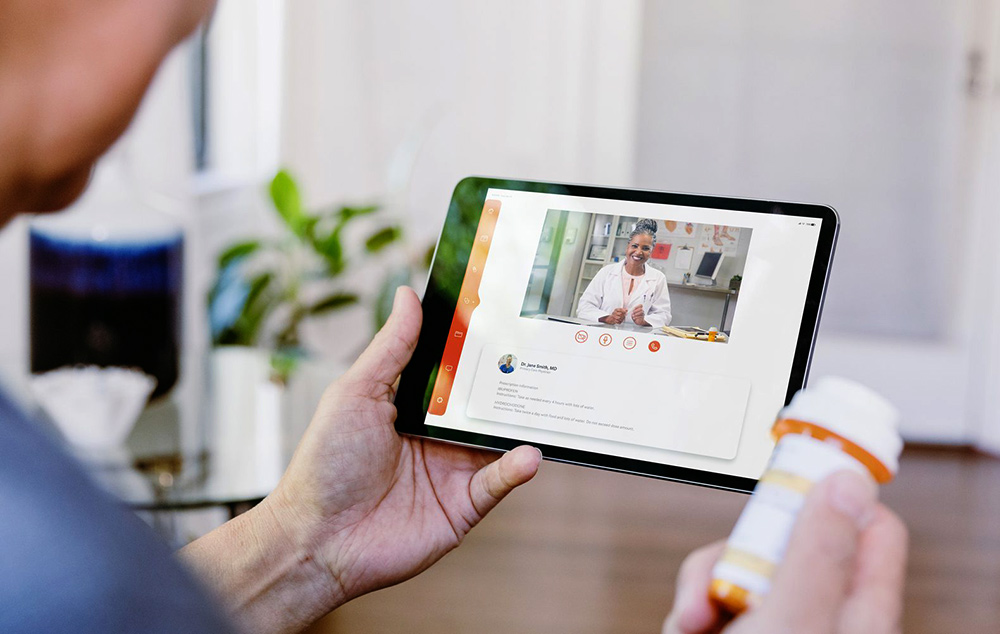COVID-19 Rapidly Refocuses Attention on Telemedicine’s Enormous Opportunity
COVID-19 continues to rapidly transform our society, it is becoming clearer every day that digital healthcare solutions like Telemedicine will be critical tools for managing the pandemic. Telemedicine has suddenly transformed from being a long-term “nice-to-have” for increasing efficiency and expanding access to an essential requirement for patient triage, diagnostics, and engagement.
While the world rapidly deploys self-quarantining for the foreseeable future and health systems mobilize to meet the virus’ demand, telemedicine solutions are experiencing an influx of new users. Public health leaders like the Centers for Disease Control and the World Health Organization have issued recommendations that telemedicine be used as a central part of containing and managing the outbreak. Just this past week, Blue Shield of California announced it would waive all out-of-pocket costs for Teladoc’s virtual health services through the end of May. This comes after Aetna also announced one week earlier that telehealth visits would have a $0 co-pay for the next 90 days. Further, now that emergency federal legislation has expanded Medicare coverage of telehealth, virtual healthcare solutions are positioned to become a powerful tool in reducing transmission between healthcare workers and patients.
Providers Forced to Innovate
COVID-19 will continue to challenge healthcare systems around the world but, amidst the chaos, hospitals and other providers are forced to innovate to limit the spread of the virus. At a time when many companies are under duress and contemplating layoffs, businesses that typically deploy providers into patients’ homes, schools, or SNFs, are especially at risk. As a result, many companies are actively exploring alternative methods to engage with their patients without having to be physically present. One CEO shared that his respiratory therapists have gained nearly 40% efficiency through their current telemedicine expansion; they are able to visit with more patients per day than ever before because they do not spend time traveling from home to home. We were also contacted by a historically regional focused facility-based behavioral healthcare company that is now offering digital grief counseling services to patients across the country, enabled by their utilization of telehealth technologies. These are just a few of the innovations companies are developing during this unique time that could enable paradigm-shifting care delivery changes. Providers that position telehealth as a compelling and value-added solution for patients will see success with adoption while those that position it as a “backup” or secondary level of care will face challenges.
Access and Availability to Healthcare
Beyond the current pandemic, as healthcare access and availability continue to be a major challenge for millions of Americans, particularly those living in rural areas, telemedicine provides remarkable solutions. As an example, in the area of women’s health, a segment in which Intrepid has observed a significant increase in M&A activity, CMS has reported that “fewer than 50% of rural women have access to perinatal services within a 30-mile drive from their home and more than 10% of rural women drive 100 miles or more for these services.” Despite this fact, an enormous discrepancy continues to exist, as only an estimated 10% of patients used telehealth services in 2019, compared to over 50% who said they would be willing to use said services.
Enormous opportunity exists in telemedicine beyond COVID-19 across the healthcare system. As digital health solutions continue to improve, one can only wonder how the competitive landscape of the industry will evolve. This market is expected to grow to nearly $22.7 billion by 2025, up from just $2.7 billion in 2016, reflecting a 26.8% CAGR. Will established players like Teladoc, the current leader with a 75% market share, be able to maintain their position or will they be challenged by industry fragmentation or a new emerging competitor?
One of the silver linings of this terrible COVID-19 experience is that telehealth now appears at the center of healthcare consumers’ attention and is destined to improve the cost, quality, and access to healthcare services overall.
